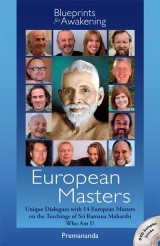The affirmation that reality is not knowable is itself an assertion of knowledge about reality. Does this not, though, amount to an example of the law of non-contradiction? To deny that it is so, involves the law of non-contradiction – so this proves that reality is knowable?
(X). The assertion “this sentence is false” is self-contradictory. From that contradiction, one cannot draw the conclusion that the sentence is in fact true. It is simply evidence of the fact that language can be used to construct self-contradictory statements.
(Martin) Rather than self-contradictory, isn’t the quoted statement in the original question a case of second-order language, that is, meta-language, as with so many paradoxes and apparent contradictions?
(X). Are you suggesting that, because it involves meta-language, it thereby avoids contradiction?
(Martin). Yes, but rather than meta-language (my mistake) the quoted passage is, seems to me, an elliptical statement. To complete it one should add: ‘by the conceptual mind’, i.e., ‘not knowable by the conceptual mind’. Real (ultimate) Reality, being non-dual, cannot be known (as you well know) as a conjugation or conjunction of a subject and an object. But it can be ‘Known’ through a unitary vision or intuition – the intuiting subject abating or subsiding as an individual by that very act. There is only one ‘Knower’ or Subject, and that is Reality Itself. ‘One without a second’. Does this prove that reality is knowable?” (under the text in bold letters). Yes, with that proviso.
(X) (Previously he had written: ‘I think one would have to insert ‘’by the conceptual mind’’ in two places to make it explicit that it is referring to conceptual knowledge, not non-conceptual non-dual knowledge. Or is your point that two different kinds of knowledge are involved in the original statement? In any case, I still don’t see how it constitutes a proof in the logical sense.’
(Martin) Correct, thank you. There is a tendency nowadays in Neo-advaita and other circles to put down the mind, let alone terms such as ‘intellectual’, ‘spiritual’, ‘metaphysical’ ‘mysticism’ (‘It’s just mind stuff’… only intellectual knowledge, or understanding’, etc.).
‘Experiential’, ‘experience’ alone are admitted in the vocabulary. I like, though, the expression ‘knowledge-experience’. All experience, and all understanding, reside in the mind (formerly, sometimes, ‘the Heart’), but the latter can be transcended.
(X) The irony is that putting down the thinking mind is itself a judgment of the thinking mind. One way to view it, which I find quite useful, is that the thinking mind can help reveal its own limits, and that can clear the way to insight that transcends the thinking mind. The classic metaphor is the wooden stick used to help burn the fire, and, at the end, the stick itself is thrown into the fire as well. The stick does not cause the burning, and it is ultimately itself burned, but that does not imply it is useless and should be tossed off into the bushes instead of skillfully used to facilitate the burning.


